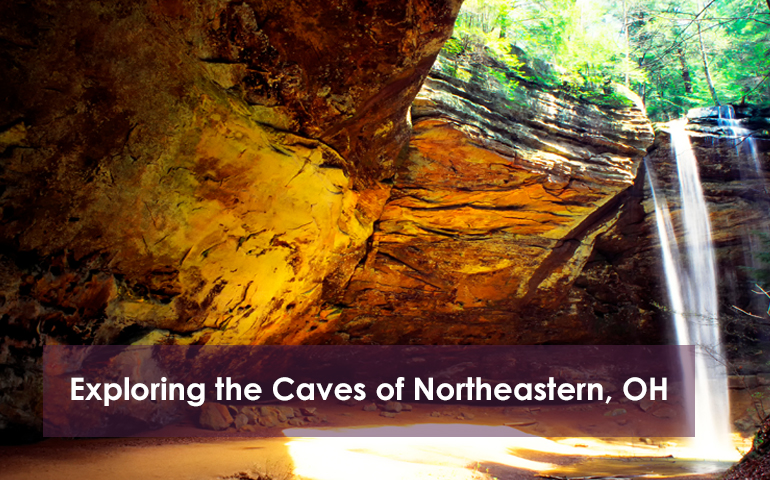
Exploring the Caves of Northeastern, OH
by Chris Petry
You don’t have to be Batman to enjoy hanging out in a cave. After all, they include some of the richest, most geologically diverse, and downright fascinating natural rock formations on the planet. Or, should I say beneath it?
According to National Geographic, there are four different types of caves. First, there’s the coastal cave. Coastal caves are tunneled into cliffs and coastline by the whipping of waves from a body of water. Next, there are lava caves. Sounds pretty cool, huh? Lava caves are created by a flood of lava that cools into a hollowed-out tube. Then you have glacial caves. These are the result of warming water within the center of an ice structure. Finally, you have karst caves. These are far and away the most common variety and probably what you imagined as soon as you read the headline. Karst, is a landscape created by the acidic dissolution of bedrock, which forms sink holes (yes, like the one that swallowed that bus in Downtown Pittsburgh once).
Why am I telling you all this? Well, it’s almost July. This rain is about to dry up like an egg in a cast iron skillet on Venus. We’re talking three-digit temperatures. Want to beat the heat AND learn a little about the crucial biosphere below your feet? Then you should explore some of the cavernous delights within a reasonable drive of your neighborhood.
To prepare, I think it’s important you acquaint yourself with some of the most basic cave jargon. That way you can focus on looking at the caves and not staring awkwardly at an underpaid tour guide. Here are some of the things that’ll help you on any cave tour.
Raise your hand if you can tell the difference between a stalagmite and a stalactite? Did you actually raise your hand? Feel silly realizing I’m not there to see it? Anyway, stalagmites are columns that form from the cave floor. These are caused by an accumulation of mineral drippings from the ceiling. Stalactites grow from the ceiling itself. Speleology is the study of caves. Spelunking is the exploration of caves. Troglofauna are the things that live in caves. Except people. They get their own classification: troglodyte. There you have it. Now you’ll know what the tour guide is talking about! Time to book a tour. Check out the links below for some fun in the su... dark?
Deerlick Cave- In Brecksville, Ohio, you’ll encounter this pretty nifty unguided cave on a four-mile loop hiking trail. Bet you’re wondering how it got its name. Well, that’s because saltwater deposits from the days when Ohio was beneath the sea make the area very attractive to local deer, who lick the rocks to get the necessary sodium they need in their diet.
Ash Cave- Take a daytrip to Ash Cave in Hocking Hills State Park. The waterfall that flows into the cave mouth is easel-ready.
Ohio Caverns- This one’s another daytrip but well worth it. Their website advertises the place as “America’s Most Colorful Caverns.” Can you think of a better reason to visit Dayton?
Seneca Caverns- Just a little over an hour Southwest of Cleveland, is the always cool (and I mean that literally, it’s 54 degrees year-round in the chamber) Seneca Caverns. It’s one of Ohio’s largest caves.
Perry’s Cave- If you’re headed out toward Toledo, check out Perry’s Cave in Put-In-Bay, on Lake Erie. It’s a steep descent into the mouth of the cave but worth it for the stunning view of the main chamber.





